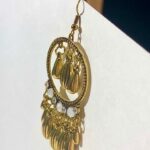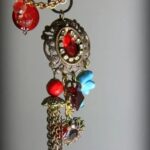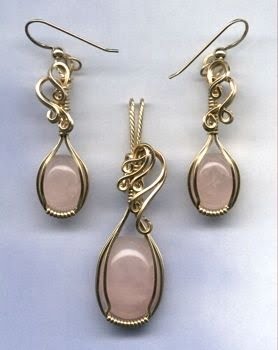Have you ever wondered what your diamond jewelry is truly worth? Whether you are considering selling your pieces, obtaining insurance coverage, or simply satisfying your curiosity, it’s essential to have a clear understanding of their value. In this article, we will delve into the factors that determine the worth of your diamond jewelry and debunk common misconceptions surrounding diamond valuations.
Determining the value of diamond jewelry can be a complex process. There are numerous factors that come into play, including the cut, color, clarity, carat weight, shape, fluorescence, and market demand. Each of these elements contributes to the overall appraisal value and marketability of your diamonds.
However, there are many myths and misconceptions surrounding diamond valuations that may cloud your judgment. It’s crucial to debunk these misconceptions in order to accurately assess the worth of your diamond jewelry. By gaining a deeper understanding of how these factors influence value, you will be better equipped to navigate the appraisal process with confidence.
In the following sections of this article, we will explore each factor that determines the value of your diamond jewelry in detail. We will cover everything from evaluating the cut quality and assessing color and clarity grades to understanding carat weight measurements and other additional factors that affect diamond valuations. Additionally, we will provide insights on utilizing professional appraisals and DIY methods to estimate the worth of your diamond jewelry.
Stay tuned as we embark on this enlightening journey into unlocking the true value of your beloved diamond jewelry. Let us equip you with valuable knowledge so that you can confidently navigate through this intricate world of appraisals and understand just what your diamond jewelry is truly worth.
Factors That Determine the Value of Diamond Jewelry
When assessing the worth of your diamond jewelry, there are several key factors to consider. These factors play a crucial role in determining the overall value and desirability of your piece. Understanding these factors can help you make informed decisions when it comes to buying, selling, or insuring your diamond jewelry.
One of the most well-known factors that determine the value of diamond jewelry is known as the 4Cs: cut, color, clarity, and carat weight. The cut refers to how well a diamond has been shaped and faceted to maximize its brilliance and fire. A well-cut diamond will reflect light exquisitely, creating sparkle and brilliance. On the other hand, a poorly cut diamond will not have optimal light performance, resulting in diminished beauty.
Color is another important factor that affects diamond value. The Gemological Institute of America (GIA) grades diamonds on a scale from D (colorless) to Z (light yellow or brown). The less color a diamond has, the more valuable it tends to be. Clarity refers to the presence of any internal flaws or external blemishes within a diamond. Inclusions and blemishes can affect how light passes through the stone, impacting its appearance and overall value.
Carat weight is perhaps one of the most well-known factors when it comes to assessing a diamond’s worth. Carat weight refers to how much a diamond weighs and is often equated with size – although this isn’t always accurate as other factors like cut can influence size perception. Generally speaking, higher carat weights are associated with higher values. However, it’s important to note that pricing discrepancies can occur based on other factors such as rarity or quality.
In addition to the 4Cs, there are other significant factors that can influence the value of your diamond jewelry. Diamond shape plays an essential role in determining desirability; certain shapes may be more popular or sought after than others in different eras or regions. Fluorescence is another factor that can affect the value and appearance of a diamond. Some diamonds exhibit a blue glow under ultraviolet light, which can either enhance or detract from their value depending on personal preference.
By taking into account these factors, you can better understand the worth of your diamond jewelry and make informed decisions regarding buying, selling, or insuring. However, it’s important to remember that market trends and demand also play a role in determining diamond valuations. Consulting with a professional appraiser can help ensure an accurate assessment of your diamond jewelry’s value.
Evaluating the Cut of Your Diamond Jewelry
When it comes to assessing the value of your diamond jewelry, one of the most crucial factors to consider is the cut. The cut determines how well a diamond interacts with light, greatly affecting its brilliance, symmetry, and overall appearance. Understanding how experts assess the cut quality and determine its worth can help you better understand the true value of your diamond jewelry.
There are various diamond cuts available, each with its own distinct characteristics and desirability. Some popular cuts include round brilliant, princess, cushion, emerald, and marquise. The round brilliant cut is highly sought after due to its exceptional sparkle and shine. Princess cut diamonds are also popular for their modern and elegant appeal. Assessing the worth of your diamond’s cut involves considering factors such as proportions, symmetry, polish, and overall craftsmanship.
Experts use specific grading systems and guidelines to evaluate the quality of a diamond’s cut. For example, the Gemological Institute of America (GIA) assesses a diamond‘s cut based on factors like brightness, fire (the dispersion of light into colors), scintillation (the pattern of light reflections), polish quality, and symmetry. These professionals will assign a cut grade ranging from Excellent to Poor based on their evaluation.
It is important to note that a well-cut diamond will often command a higher value compared to one that is poorly cut or has subpar proportions. A finely crafted diamond that exhibits excellent levels of brilliance and sparkle will be more desirable in the market. So when determining the worth of your diamond jewelry, carefully evaluate its cut quality alongside other factors such as color and clarity for an accurate valuation.
Here are some key points to remember when evaluating the cut of your diamond jewelry
- Consider different cuts available in diamonds.
- Assess factors like proportions, symmetry, polish quality, and overall craftsmanship.
- Understand the grading systems used by experts, such as the GIA cut grade.
- Recognize the importance of a well-cut diamond for its desirability and market value.
By understanding the significance of a diamond’s cut and how it influences its value, you can gain a better understanding of your diamond jewelry’s worth. Whether you are looking to sell your jewelry or simply want to have an accurate valuation for insurance purposes, evaluating the cut is an essential step in determining its true value.
Analyzing the Color and Clarity of Your Diamond Jewelry
When determining the value of diamond jewelry, two important factors to consider are color and clarity. These characteristics can greatly impact the worth of your diamond pieces, as they play a significant role in their overall appearance. It is crucial to understand the significance of color and clarity grades, how inclusions and blemishes affect value, as well as the role of certifications in determining worth.
Diamond color refers to the presence or absence of any visible tint in a diamond. The Gemological Institute of America (GIA), one of the most reputable grading authorities, uses a scale from D to Z to grade diamond colors.
Diamonds with higher grades, from D to F, are considered colorless and are highly sought after for their rarity and brilliance. As you move down the scale towards Z, diamonds exhibit more visible yellow or brown tones, which decrease their desirability and market value.
Clarity is determined by the quantity, size, location, and nature of internal characteristics or external blemishes within a diamond. The GIA also uses a scale ranging from Flawless (FL) to Included (I) to assess a diamond’s clarity. FL represents diamonds without any internal or external flaws visible under 10x magnification, while I denotes diamonds with obvious inclusions visible even without magnification. The fewer the imperfections within a diamond, the higher its clarity grade and thus its value.
It is important to note that certifications from reputable grading laboratories such as GIA or AGS play an essential role in determining a diamond’s color and clarity grades. These certifications provide an objective assessment of a diamond’s quality based on industry standards. When considering selling or insuring your diamond jewelry, having these certifications will help establish trust and ensure accurate valuation.
| Factor | Description |
|---|---|
| Diamond Color | – Presence or absence of visible tint in a diamond
|
| Diamond Clarity | – Assessment of internal characteristics and external blemishes in a diamond
|
| Certifications | – Provided by reputable grading laboratories such as GIA or AGS
|
Understanding the Carat Weight of Your Diamond Jewelry
When evaluating the worth of your diamond jewelry, understanding the carat weight is an essential factor to consider. Carat weight refers to the actual weight of the diamond and plays a significant role in determining its value. Diamonds are weighed using a metric carat, which equals 0.2 grams or 200 milligrams.
The relationship between carat weight and diamond size is not always straightforward. While it’s easy to assume that a higher carat weight means a larger diamond, other factors such as cut, shape, and depth can influence how the weight is distributed and ultimately affect the visual size of the diamond. For example, a well-cut diamond may appear larger than its carat weight suggests due to its ability to reflect light, while a shallow-cut diamond may appear smaller.
It’s important to note that pricing discrepancies exist when it comes to high or low carat diamonds. While larger diamonds may seem more valuable, there are certain price per carat thresholds that can significantly impact their worth. Additionally, extremely high carat weights can be rare and therefore demand premium prices. On the other hand, low-carat diamonds can often be more affordable without compromising on quality.
| Carat Weight | Average Price Range |
|---|---|
| 0.50 – 0.75 | $1,000 – $3,000 |
| 1.00 – 1.25 | $4,000 – $8,000 |
| 1.50 – 2.00 | $9,000 – $15,000 |
| 2.50 – 3.00 | $20,000 – $30,000 |
It’s important to remember that these price ranges are just a general guideline and can vary based on the other factors that determine diamond value, such as cut, color, clarity, and market demand. Consulting with a professional appraiser is always recommended for an accurate assessment of your diamond jewelry’s worth based on its carat weight and other essential considerations.
Identifying Additional Factors That Affect Diamond Valuations
Factors That Influence Diamond Shape and its Popularity
One of the additional factors that can affect the valuation of diamond jewelry is the shape of the diamond itself. The shape refers to the geometric outline of the stone, such as round, princess, oval, or emerald. Different shapes have varying degrees of popularity and desirability, which can impact their value in the market.
Round diamonds are often considered to be the most traditional and timeless shape. They are also known to reflect light exceptionally well due to their symmetrical cut. As a result, round diamonds tend to be highly sought after and may command a higher price compared to other shapes.
On the other hand, fancy-shaped diamonds such as princess, emerald, and cushion cuts have gained popularity in recent years. These shapes offer a unique and modern look that appeals to many consumers. However, since fancy-shaped diamonds require specific cutting techniques to maximize their brilliance and minimize flaws, they may require more skill from diamond cutters. This can make them more expensive than round diamonds in some cases.
Another factor influencing diamond shape popularity is fashion trends. Certain shapes may come in and out of style over time based on changing preferences within the market. It’s important for diamond owners to keep this in mind when evaluating the worth of their diamond jewelry.
The Impact of Diamond Fluorescence on Value and Appearance
Diamond fluorescence refers to how a diamond emits visible light under ultraviolet (UV) radiation. While some diamonds exhibit fluorescence by glowing blue or yellowish-blue under UV light, others do not fluoresce at all. The presence or absence of fluorescence can impact both the value and appearance of a diamond.
In general, if a diamond fluoresces strongly blue under UV light, it may appear slightly hazy or milky in natural daylight or certain lighting conditions. This can negatively affect its visual appeal and potentially lower its value as compared to a diamond without fluorescence. On the other hand, diamonds with medium or faint fluorescence may not have a noticeable effect on their appearance and value.
It’s important to note that the impact of fluorescence on diamond value is subjective and can vary depending on personal preferences. While some people may prefer diamonds with no fluorescence, others may appreciate and seek out diamonds with certain levels of fluorescence for their unique glow under UV light.
Assessing the Worth of Fancy Colored Diamonds
In addition to the traditional white diamonds, fancy colored diamonds have become increasingly popular in recent years. These diamonds come in a variety of vibrant colors, such as yellow, pink, blue, and green. The rarest and most intense colored diamonds are known as fancy vivid or deep colors and command high prices in the market.
The value of fancy colored diamonds is primarily determined by three factors: hue, saturation, and tone. Hue refers to the dominant color visible in the diamond, while saturation describes the intensity or strength of that color. Tone refers to how light or dark the color appears. Generally, fancy colored diamonds with vivid hues, high saturation levels, and medium tones are considered more valuable.
The rarity of fancy colored diamonds compared to traditional white diamonds contributes to their higher worth. Additionally, factors such as size and shape can also influence their valuation. Due to their unique characteristics and limited availability in certain colors, fancy colored diamonds often carry a premium price tag in the market.
Utilizing Professional Appraisals for Determining Diamond Worth
When it comes to determining the worth of your diamond jewelry, one of the most reliable and accurate methods is through professional appraisals. Diamond appraisals are conducted by certified experts who have in-depth knowledge and experience in assessing the value of diamonds. Whether you are looking to insure your diamond jewelry or sell it, a professional appraisal provides you with an objective and comprehensive evaluation.
How diamond appraisals work and the importance of certified appraisers
Diamond appraisals involve a thorough examination of various factors that contribute to the value of a diamond, such as the 4Cs (cut, color, clarity, and carat weight) as well as other significant factors like shape, fluorescence, and rarity. Certified appraisers have specialized training and education in gemology and are skilled at evaluating these elements. They use precise tools like microscopes and grading instruments to determine the quality and characteristics of your diamond jewelry.
The difference between insurance and fair market value appraisals
There are two main types of professional appraisals: insurance appraisals and fair market value (FMV) appraisals. An insurance appraisal is used for setting coverage limits for insurance policies. It provides an estimate of the retail replacement value that would be required to replace your diamond jewelry at current market prices.
On the other hand, an FMV appraisal is typically utilized for selling purposes or for determining estate values. It provides an assessment of the current market value based on factors like supply and demand trends.
Tips for choosing a reputable appraiser for your diamond jewelry
When selecting a professional appraiser for your diamond jewelry, it is important to choose someone who is qualified, experienced, unbiased, and reputable. Look for certifications from recognized organizations such as the Gemological Institute of America (GIA) and the American Society of Appraisers (ASA). Additionally, consider seeking referrals from trusted jewelers or friends who have had positive experiences with appraisers.
Market Value vs. Sentimental Value
When it comes to determining the worth of your diamond jewelry, it is important to understand the distinction between market value and sentimental value. While market value refers to the price that a buyer would be willing to pay for your piece in the current market, sentimental value relates to the emotional attachment and personal meaning that your jewelry holds for you. Both of these factors play a significant role in assessing the overall worth of your diamond jewelry.
Market value is typically determined by various factors such as the quality of the diamond, the current demand for similar pieces in the market, and any fluctuations within the diamond industry. To determine the market value of your diamond jewelry, it is advisable to consult with an expert appraiser who can thoroughly evaluate its characteristics according to industry standards and assess its worth based on current market trends.
On the other hand, sentimental value relates to how much your jewelry means to you personally. It may hold sentimental value due to its association with cherished memories, family heirloom status, or being a special gift from a loved one. This sentimental attachment can significantly enhance the perceived worth of your diamond jewelry beyond its inherent monetary value.
While sentimental value cannot be quantified in monetary terms, it is important not to overlook its significance when determining the overall worth of your diamond jewelry. In some cases, sentimental value can outweigh market value when deciding whether to keep or sell a piece.
DIY Methods to Estimate the Worth of Your Diamond Jewelry at Home
Estimating the worth of your diamond jewelry at home can be a useful starting point, providing you with a general idea of its value before seeking professional appraisal. However, it is important to acknowledge the limitations and precautions associated with DIY methods. While these techniques can give you a rough estimate, they should not be considered as definitive or final values.
There are several simple techniques you can use at home to assess the quality and worth of your diamond jewelry. One method is to examine your diamond using a loupe or magnifying glass, looking for any visible inclusions or blemishes that may affect its value. You can also use a color grading chart to compare the color of your diamond to industry standards. Additionally, weighing your diamond on an accurate scale will give you an idea of its carat weight.
Online resources and tools can also provide preliminary valuations for your diamond jewelry. Many reputable websites offer price calculators or databases that allow you to input information about your stone, such as the 4Cs and certifications, in order to receive an estimated value. While these online estimates can be helpful, they should not replace professional appraisals.
It is essential to understand that DIY methods have their limitations and potential pitfalls. Without proper training and experience, it is easy to overestimate or underestimate the value of your diamonds.
In addition, factors such as the overall condition of the piece, market trends, and demand are difficult to accurately gauge without expert knowledge. Therefore, once you have used DIY methods to estimate the worth of your diamond jewelry at home, it is highly recommended that you seek a professional appraisal for a more accurate assessment before making any important decisions regarding insurance or selling purposes.
Frequently Asked Questions
How do I know how much my diamond jewelry is worth?
The value of your diamond jewelry can be determined by considering several factors. Firstly, the 4Cs – carat weight, color, clarity, and cut – play a significant role in determining its worth. Each of these characteristics affect the rarity and desirability of the diamond.
Additionally, factors such as market demand and current economic conditions can impact its value. To get an accurate estimation, it is recommended to consult with a professional appraiser who specializes in diamonds. They will assess your jewelry based on these factors and provide you with a comprehensive valuation report.
How much can I get for my diamond?
The amount you can get for your diamond depends on various factors, including its quality, size, and the market conditions at the time of selling. As mentioned earlier, the 4Cs have a significant impact on diamond pricing. Generally speaking, larger diamonds tend to fetch higher prices due to their perceived rarity and desirability.
However, it is important to note that the resale value of diamonds is generally lower than their initial purchase price due to markups in retail settings. If you are considering selling your diamond jewelry, it is advisable to seek multiple opinions from reputable jewelers or consider consignment services that specialize in selling pre-owned jewelry.
How much will a jeweler pay for diamond ring?
The amount that a jeweler will pay for a diamond ring can vary depending on multiple aspects. First and foremost, the jeweler will consider the details of the diamond itself: carat weight, color grade, clarity grade, and cut grade. These details help determine its overall quality and desirability in the market.
Secondly, jewelers typically have their own pricing strategies and profit margins they aim to maintain when buying diamonds from individuals. This means that different jewelers may offer different prices for similar diamonds. To ensure you receive a fair price for your diamond ring from a jeweler, it is recommended to obtain multiple independent appraisals or explore selling options beyond traditional brick-and-mortar stores such as online marketplaces or auction houses.

Welcome to my jewelry blog! My name is Sarah and I am the owner of this blog.
I love making jewelry and sharing my creations with others.
So whether you’re someone who loves wearing jewelry yourself or simply enjoys learning about it, be sure to check out my blog for insightful posts on everything related to this exciting topic!





